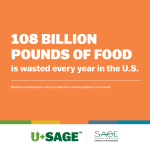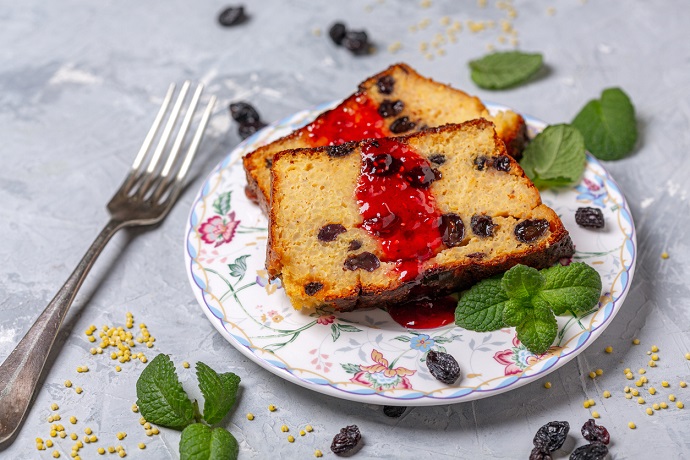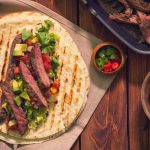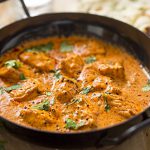This September is unique because Rosh Hashana, Yom Kippur, and Sukkot fall within the same month. Determined by the Hebrew calendar, these holidays fall on different dates each year, typically between September and October. Let’s take a closer look at each of these religious holidays and their culinary traditions.
Rosh Hashana
Rosh Hashana, meaning “head of the year,” celebrates the Jewish New Year and commemorates the birth of the universe. A time to celebrate new beginnings, Rosh Hashana is a period of prayer, reflection, and blessings.
Like many Jewish holidays, food plays an important and symbolic role in the celebration. Families feast throughout the holiday period, which lasts two days. Celebrants eat challah, a type of special, ceremonial bread. Instead of dipping their bread in salt, however, participants dip morsels into honey as a wish for a sweet year. The challah served during Rosh Hashana is baked in round loaves and often contains raisins.
Additional sweet items consumed during the holiday include apples dipped in honey, pomegranates, tzimmes — a sweet carrot dish — and a fruit that’s newly in season. In the past, it was tradition to eat parts of a fish or ram’s head, symbolizing the beginning, or the head, of the new year. Today, gummy bears are used as a symbol and enjoyed by people of all ages!
Yom Kippur
Taking place about a week after Rosh Hashana, Yom Kippur — the Day of Atonement — is the holiest and most solemn holiday in the Jewish faith. Yom Kippur is a day of fasting and prayer, but the day before the holiday is a time of feasting and preparation.
Pre-fast meals include traditional fare like rice, stuffed dumplings, challah, chicken, or fish. The food consumed to break the Yom Kippur fast is a bit heavier or more indulgent and includes bread and dairy. For example, sweet kugel is served along with bagels, quiche, eggs, cheese, and sometimes brisket.
Sukkot
Five days after Yom Kippur is Sukkot, a weeklong holiday or harvest festival celebrating the Israelites’ divine protection when they fled Egypt. Celebrants construct a temporary shelter called a sukkah to honor the passage through the Sinai desert and the dwelling provided throughout the journey. The sukkah is comprised of at least three walls and includes natural vegetation (usually on the roof). At a minimum, participants consume all meals in the sukkah during the week, but the goal is to spend as much time as possible in the shelter throughout the observance.
As Sukkot celebrates the harvest or bounty, it’s common to see holiday meals include fresh fruits, vegetables, and other ingredients related to harvest. Kreplach, or dumplings, are the only traditional dish served during Sukkot (on the seventh day), so recipes will vary by family tradition and country of origin. A meal during this holiday could include anything from salads to matzo ball soup, roasted root vegetables, and gefilte fish.
Perfect for brunch, try this recipe today!
Kugel with Apples and Raisins Servings: 14
Ingredients:
8 ounces dry egg noodles 3 apples
¼ cup vegetable oil 4 eggs
½ cup granulated sugar 1 teaspoon ground cinnamon
½ cup seedless raisins 1 teaspoon salt
STEP 1: Preheat oven to 350 F. Lightly coat an 8-inch by 8-inch pan with cooking spray.
STEP 2: Prepare ingredients by washing apples and coarsely shredding apples with a box grater. Crack eggs into a bowl and whisk together.
STEP 3: Cook noodles for 10 minutes, drain, and then shock in ice water. Drain and place into a large bowl. Mix noodles with oil.
STEP 4: Add remaining ingredients to the noodle mixture; mix well. Pour mixture into your prepared baking pan.
STEP 5: Bake for 40 minutes until golden brown. Cover kugel if it begins to brown too early. Allow to cool slightly and cut into 14 squares before serving.









